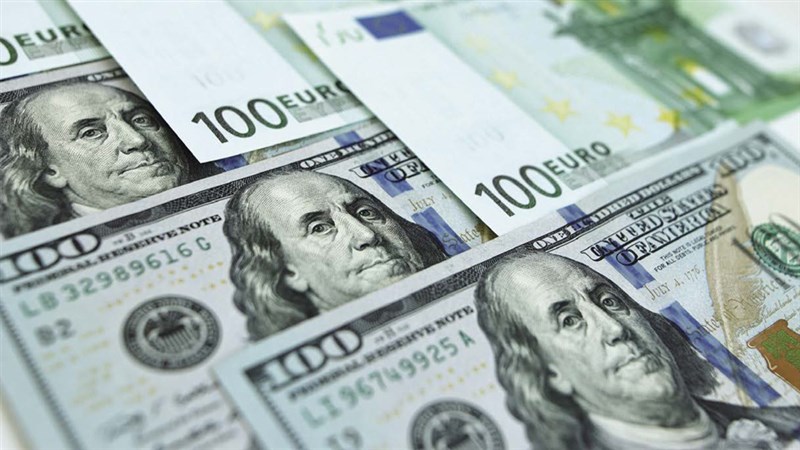2020.09 The Taiwan Banker NO.129 / By David Stinson
Reserve Currency Status Depends on Resilience, not just FinancialsThe US dollar has been weakened, but it will take a long time to build an alternative
The future of the dollar's role as the preeminent reserve currency is in doubt once again amid Washington's poor handling of the coronavirus pandemic, its voracious appetite for quantitative easing, and rising tensions with China. Billionaire investor Ray Dalio published a widely shared series of blog posts on the dynamics of reserve currency empires, showing that the peak of reserve currency status trails other measures of wealth and power by a full 75 years on average. By the time it starts to decline, factors like innovation, competitiveness, and military strength are already well below the levels that supported its rise in the first place. According to the same analysis, “China has become a competitive power to the United States in a number of ways and is growing at a faster rate than the US.If trends continue, it will be stronger than the United States in most of the most important ways that an empire becomes dominant.(Or at the very least, it will become a worthy competitor.)” These comments came as the US Dollar Index is down 7% since April, and gold has soared to above US$ 2,000 per ounce. A return of inflation would have increasingly painful consequences with more debt, but this remains a less likely scenario, given how long it has remained subdued. Although the US will hold onto its top position for some time to come, its structural weakness, exacerbated by the pandemic, creates a power vacuum that may partly explain current geopolitical instability. Momentum In late July, Fitch revised its outlook for US debt to negative. Although the commentary noted risks due to the pandemic, it also noted that “high fiscal deficits and debt were already on a rising medium-term path even before the onset of the huge economic shock precipitated by the coronavirus.” It also pointed to fiscal risks from political polarization. Disaffected populations and populist uprisings are the result of poor-quality public goods. One particular area that highlights the challenges for the US (besides its COVID response itself) is infrastructure. Oxford Economics projects a US$ 4 trillion backlog in investment spending by 2040. Unlike general financial debt, this debt can’t be rolled over indefinitely and will come due at some point in the form of required emergency repairs. What’s more worrying than the amount of debt itself is the reasons for this underinvestment. Construction costs in the US for various categories of transit are consistently higher on a per-mile basis than in comparable countries such as Europe – sometimes up to an order of magnitude higher. This gap can’t be explained by simple factors like materials costs or labor bargaining, but rather is attributable to more abstract issues like local government interference, overstaffing, inefficient and ineffective bidding processes, and general lack of accountability. Besides this “cost disease,” infrastructure must often be funded at the state level, where budget constraints are much more severe than for the federal government. This squeeze is particularly acute during crises like the current one, requiring the federal government to fund increased spending. So far, however, the US bailout has focused on individuals and businesses rather than states. The problems with US infrastructure spending mirror many of the difficulties it has had with its pandemic response – including excessive reliance on state governments, difficulties procuring supplies like tests and masks, and unwieldy statistical systems. In other words, these issues are systemic and will require comprehensive reforms, supporting the notion of deeper problems. At the same time, currency economics is indeed highly momentum-driven. Brad Setser of the Council of Foreign Relations points out that a weaker US dollar typically results in greater intervention by emerging market central banks, purchasing US dollars to contain appreciation of their currencies. That’s to say, even if the price of the dollar changes, demand remains relatively constant in quantity terms. Due to the proven resilience of its markets, any decline in US state capacity would take some time to impact demand for its sovereign debt. Don’t forget Europe The fundamental obstacle for any declinist story for the dollar has always been the lack of any viable alternatives. Into this gap has stepped an assertive China, which has signaled its willingness to take on US financial dominance through its moves in Hong Kong. Banks doing business there are now being faced with contradictory legal requirements by the US to sanction government officials, and by China not to comply with US sanctions – turning the Cold War into a test of financial systems. Dalio compares current events to the period from 1930 to 1945. The transitions as the British empire gave way to the American one (and previously from to the Dutch empire to the British one) featured economic warfare – often leading up to “hot” war. China’s rise in overall power provides an attractive explanation for its increasing tensions with the US. China would like the ability to resist US sanctions, but despite the bipolarity implied by a “cold war” – and strength in some of the early signs of an empire such as trade – it has no opportunity to directly challenge the dollar, or interest in taking the steps to do so. This would require a flexible exchange rate driven by open, transparent capital markets. With little in the way of legal institutions to protect even domestic retirees, orderly markets for foreign investors remain a distant dream. There is of course no guarantee that a rapidly industrinalizing country will become a significant currency power. For a bit of modern perspective, shortly after the fall of the Soviet Union, it was commonplace to declare that “Japan and Germany won the Cold War.” In 1990, before it became clearer that the international order would be closer to a unipolar one, UK Prime Minister Margaret Thatcher predicted that the world would be dominated by the dollar, yen, and deutsche mark. The RMB makes up about 2% of SWIFT payments, ranking 5th, trailing the euro and the yen, so it’s not clear that any dollar weakness would even necessarily help China. Perhaps then the earlier analysis still has some validity. In particular, the emergence of the euro seems like major enough of an event to deserve a place in a big-picture analysis of global power. Surprisingly, Europe is one of the world’s major bright spots at the moment. The EU recently approved the first fiscal rescue package to go through the EU itself, a major breakthrough in fiscal unity. The pandemic also remains relatively well-controlled in continental Europe, despite early outbreaks. To be sure, many of the old problems remain, particularly regarding core/periphery relations, but the overall response has been better than after the 2008 financial crisis. It’s quite possible that the EU has more institutional flexibility at this point than an ideologically ossified China, while also starting at a stronger position. Even from China’s perspective, “de-dollarization” favors the euro for the moment. The US dollar ratio of trade between Russia and China fell below 50% for the first time in the first quarter, but still due in greater measure to the euro (30%) than to the renminbi itself (17%). On a historic time scale, national power comes from an ability to respond at key moments, rather than any specific financial metrics. This puts the EU in a solid number two position – just as the payments statistics indicate. Dalio is undoubtedly correct that increasing instability around the world reflects a lack of direction from the US, but the rise of the EU is also a caution against overly loose historical analogies. There are fewer precedents for an empire arising out of equal merger rather than organic growth. Cost disease Finally, the outcome of the November US presidential election must be a major factor in any assessment of American financial power. Democratic candidate Joe Biden and his running mate Kamala Harris are leading by solid (and for some constituencies, historic) margins. Having said that, due to the ongoing pandemic, the election promises to be a logistical nightmare, which will erode confidence in the process. New York State held a primary on June 23, and some of the results still haven’t been called as of this writing, seven weeks later – a potential preview of the much larger mail-in election on November 3. If Biden aspires to put the country on a different track for the longer term, he will need to address this “cost disease,” which is not just limited to infrastructure or government-related procurement projects. An additional victim of the states’ separate budgeting process will be higher education, which is mostly funded at the state level. During the 2008 financial crisis, cuts in education caused higher costs for students and counteracted active fiscal policy at the federal level. Now, universities are bracing for unprecedented financial pressure, and many won’t survive the next year. Health costs are another productivity sap for the American economy – even outside the context of the current crisis. Analysis by Matt Bruenig of the People’s Policy Project shows that when compulsory health insurance paid to private providers is added to taxes, the US is no longer a low-tax jurisdiction; its personal taxes become higher than those in almost all of Western Europe. This has all occurred despite a federal deficit of more than 2% of GDP every year since before the financial crisis. The COVID crisis didn’t create these problems, but it has put the spotlight on them. The Fitch commentary noted that “the economic crisis has likely brought forward the point at which social security and healthcare trust funds are exhausted, demanding bipartisan legislative action to sustainably fund or reform these programs.” Questions of funding however lag behind larger issues of competitiveness. The question now is whether the US will act like a young empire, or an aging one.


